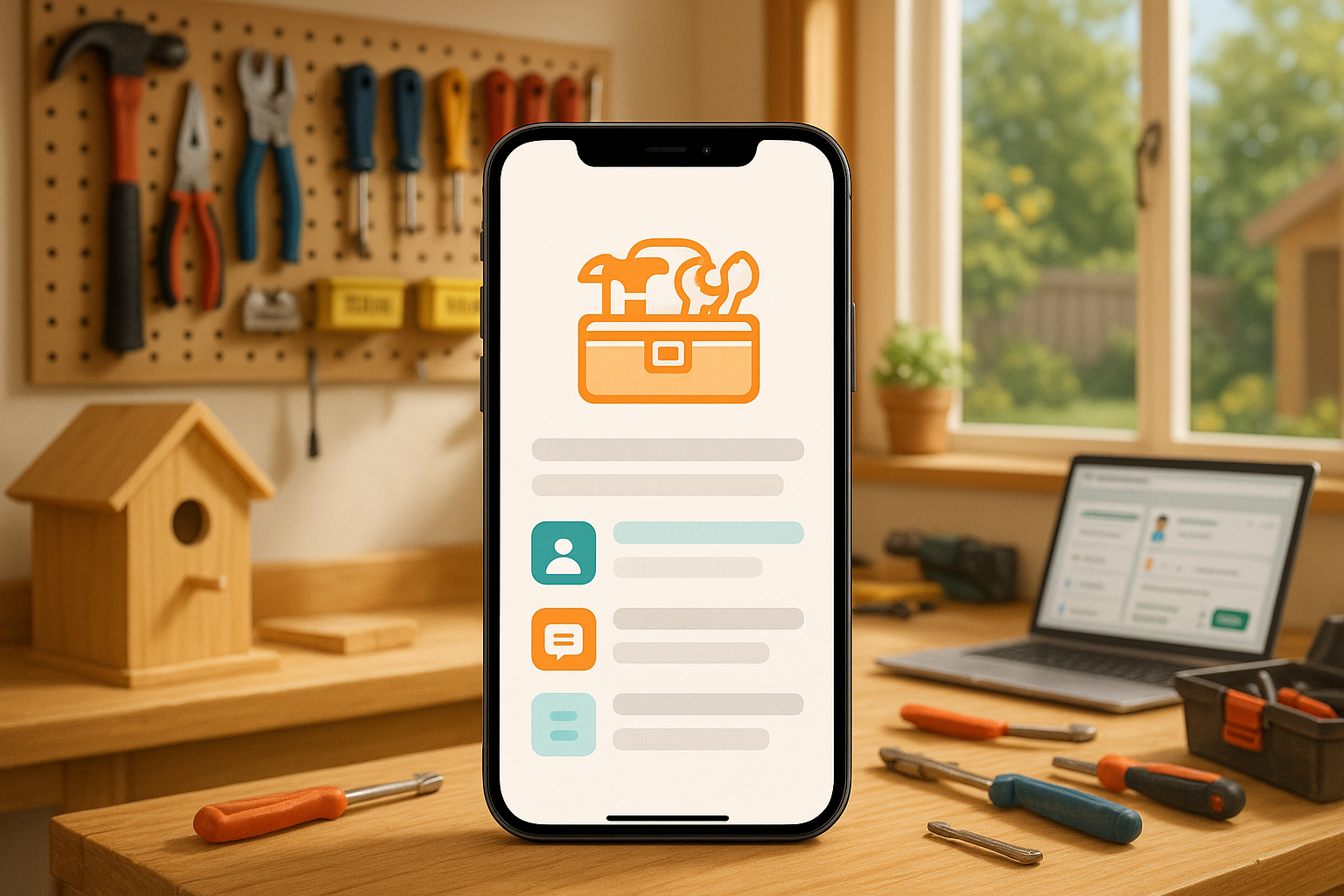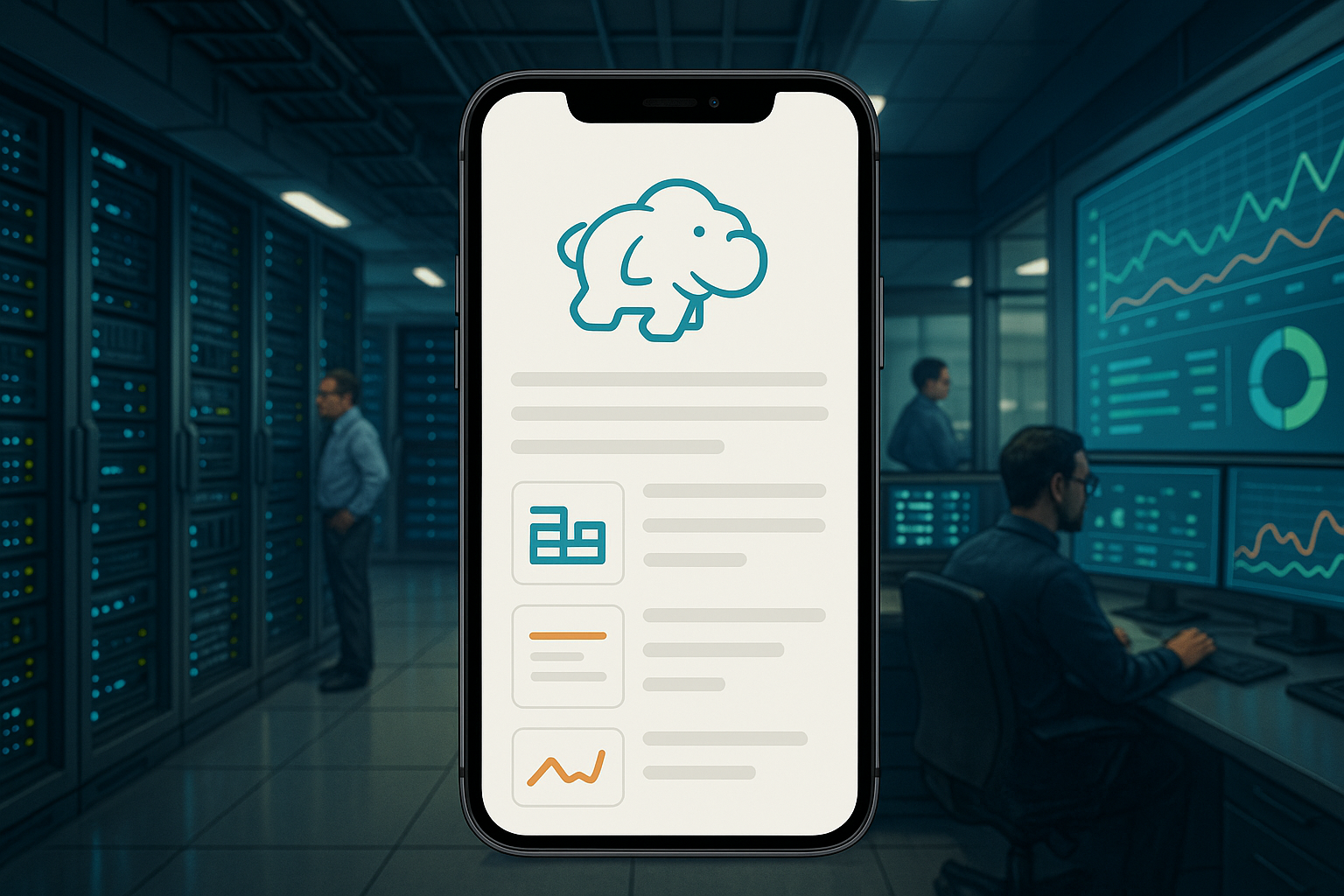The Blueprint for Success in Handyman App Development
The digital transformation of home services has created a burgeoning market for on-demand solutions. Handyman apps, which connect users with skilled professionals for everything from plumbing to pest control, represent a massive opportunity. Consumers crave the convenience of booking services with a few taps on their phone, and businesses are eager to gain the online visibility these platforms provide. However, the path from a great idea to a successful, revenue-generating app is fraught with challenges. The technical complexity, resource-intensive nature of development, and difficulty in acquiring top-tier talent can quickly derail even the most promising projects.
This comprehensive guide is designed to serve as your blueprint for navigating the intricate world of handyman app development. We will explore the core definition and essential features of these applications, dissect the formidable challenges of in-house development, and analyze the different business models you can adopt. Furthermore, we will provide a detailed breakdown of the associated costs and introduce you to the leading development companies that can turn your vision into a reality.
As a top US AI-powered app development firm with over 20 years of experience, we at MetaCTO have guided countless startups and established businesses through this very process. We specialize in transforming ambitious concepts into market-ready mobile apps, handling every step from initial strategy and design to launch, growth, and monetization. This article will leverage that deep expertise to provide you with the insights needed to build your app the right way, from day one.
What is a Handyman App?
At its core, a handyman app is a digital platform that facilitates the end-to-end process of booking and delivering home services. It acts as a two-sided marketplace, connecting individuals or businesses in need of a handyman with professionals or companies seeking to provide those services. These applications streamline what was once a cumbersome process of phone calls, scheduling conflicts, and opaque pricing into a seamless, on-demand experience.
The scope of services offered through these apps is vast and extends far beyond traditional handyman tasks. They can be used across a multitude of industries, including:
- Plumbing
- Painting
- Tiling
- House Cleaning
- Pest Control
- Electricians
- Carpentry
- Laundry Services
- Personal Fitness
- Dog Walking
- Furniture Assembly
- Personal Shopping
- Gutter Cleaning
- Gas Station Services
- On-Demand Mechanics
- Beauty On-Demand
- Car Care
- Delivery Services
Core Features and Functionality
A successful handyman app is more than just a booking form. It is a sophisticated ecosystem of features designed to create a frictionless experience for both customers and service providers. These integrated functionalities are what set a professional application apart.
- Booking and Scheduling: The cornerstone of any handyman app is the ability to book a professional for a specific time at a set price. An integrated appointment scheduler allows providers to manage all job types and organize their work projects efficiently, while online booking forms can significantly increase service bookings, even allowing customers from outside the local state or country to schedule services.
- Real-Time Tracking and GPS: Modern apps use GPS-based features to pinpoint a user’s exact location, enabling localized service outreach. Once a job is accepted, the customer can track the handyman’s real-time progress and see an estimated time of arrival, adding a layer of transparency and trust to the process.
- Secure and Diverse Payment Options: To cater to a wide user base, handyman apps must offer multiple payment options. This includes integrating safe and reliable payment gateways like Stripe and PayPal to securely accept credit and debit card payments.
- Provider and Service Profiles: The app must provide users with comprehensive information about service providers. This includes details on their pricing, areas of expertise, availability, and, crucially, star ratings and reviews from previous customers to build credibility.
- Integrated CRM and Management Tools: For businesses, handyman applications can integrate custom CRM software to manage customer relationships effectively. This helps track tasks, roles, documents, client interactions, quotations, invoices, orders, and schedules all in one centralized location. Features like a Multi-Location or Super Administrator dashboard allow a business to manage rosters, invoices, reports, and staff from a convenient web interface.
- Communication Channels: Effective communication is key. Modern apps improve a company’s communication capabilities through integrated social media channels, direct messaging, and group chat functionalities.
Reasons It Is Difficult to Develop a Handyman App In-House
While the allure of building a proprietary application from the ground up is strong, many startups and businesses underestimate the inherent difficulties. The journey is riddled with technical, financial, and logistical hurdles that can prove insurmountable without a seasoned team. Hiring an expert development agency like MetaCTO can help you navigate these challenges and go to market faster.
Technical Complexity and Scalability
The primary technical challenge lies in bringing a wide variety of services, each with its own logic and requirements, under a single, cohesive umbrella. Some developers may struggle to build a platform that is both versatile and capable of delivering a consistently high standard of user experience across all service categories. The backend architecture must be robust enough to handle user data, complex booking algorithms, payment processing, real-time notifications, and GPS tracking simultaneously. As the user base grows, the system must scale seamlessly to avoid performance degradation, a task that requires deep architectural expertise.
Significant Financial Investment
Building a quality application is a capital-intensive endeavor. The costs extend far beyond the initial coding. A substantial budget is required to cover:
- Development: The cost of designing, coding, and building the app for one or multiple platforms.
- Testing: Rigorous manual and automated testing to identify and fix bugs.
- Security: Implementing robust security measures to protect user data and payment information.
- Marketing: A significant budget is needed to acquire both customers and service providers.
- Operations: Ongoing costs for server maintenance, customer support, and administrative tasks.
For most startups operating with limited funds and resources, trying to manage all these expenses at once is simply not feasible.
Talent Acquisition and Domain Expertise
Assembling a team with the right skills is one of the most significant barriers to in-house development. You need more than just coders; you need a full-fledged team of:
- UI/UX Designers: To create an intuitive and engaging user interface.
- Mobile App Developers: With expertise in iOS, Android, or cross-platform technologies.
- Backend Developers: To build the server-side logic and database.
- QA Engineers: To ensure the app is stable and bug-free.
- Project Managers: To keep the development process on track.
- Domain Experts: Who understand the nuances of the on-demand service industry.
Acquiring this level of expertise is not only difficult but also time-consuming and expensive. At MetaCTO, we provide this entire team as part of our service. Our process handles every step, from validating your idea with a Rapid MVP Development plan to building, launching, and scaling your app, ensuring you get expert guidance without the headache of hiring.
Different Types of Handyman Apps: The Business Models
Not all handyman apps are created equal. They are typically built around one of three major business models, each catering to a different segment of the market. Choosing the right model is a critical strategic decision that will shape your app’s functionality, target audience, and revenue streams.
1. The Individual Business Model
This model is designed for a single handyman or a small-scale freelancer who wants to brand their service through a dedicated on-demand app. It essentially digitizes a solo operation, allowing a professional to manage their business more efficiently.
- How it Works: Users can hire the handyman directly through the app. The platform provides them with access to the handyman’s specific pricing, star ratings, areas of expertise, and real-time availability.
- Best For: Independent contractors who want to build a personal brand, streamline their booking process, and offer a more professional experience to their clients.
2. The Business Owner Model
This model is tailored for an established company that employs a team of handymen and wants to digitize its services. The app becomes the primary digital storefront for the entire business, centralizing its operations.
- How it Works: Users hire the company, not an individual. Within the app, they can often compare the different handymen employed by the company and see the standardized prices the company charges for each service. For the business owner, the app is a powerful tool for tracking digital growth, monitoring which handymen are performing well, identifying customer acquisition sources, and even incorporating a reward-and-incentive system for staff.
- Best For: Existing home service companies (e.g., plumbing, HVAC, electrical) looking to modernize their operations, expand their customer base, and gain a competitive edge.
3. The Aggregator Business Model
The Aggregator model is the most common and scalable approach, creating a marketplace that connects a large pool of independent, freelance handymen with a broad customer base. Famous apps like TaskRabbit and Handy operate on this model.
- How it Works: The app owner does not necessarily offer any handyman services themselves. Instead, they provide the platform where freelancers can sign up to offer their services. The app owner typically makes money by taking a commission or fee from every transaction that occurs on the platform. This model allows the business to track, monitor, and manage growth by showing which locations are most active, who the star handymen are, and what actions can be taken to increase popularity in other areas.
- Best For: Entrepreneurs and businesses looking to build a large, scalable marketplace platform without needing to hire their own team of service providers.
Cost Estimate for Developing a Handyman App
Estimating the cost of app development is complex, as it depends on a wide array of factors. The total investment can range from $20,000 for a very simple application to over $200,000 for a feature-rich, complex platform. To understand this range, it’s essential to break down the key cost drivers.
App Complexity and Features
The single biggest factor influencing cost is the number and complexity of features you choose to include. More features require more time to design, code, test, and release, which directly increases development hours and, therefore, the cost.
- Simple Handyman App ($20,000 - $60,000): This would be a Minimum Viable Product (MVP) with only the core features, such as user login, a basic service list, a booking form, and a simple payment option.
- Medium Handyman App ($60,000 - $120,000): This includes all the basic features plus intermediate functionalities like ratings and reviews, push notifications, and more detailed provider profiles.
- Complex Handyman App ($120,000 - $200,000+): This is a full-featured application with advanced capabilities like real-time GPS tracking, in-app chat and video calls, AI-powered matching algorithms, and a sophisticated admin panel with advanced analytics.
The cost impact of specific features can be categorized as follows:
| Feature Category | Features | Cost Impact |
|---|---|---|
| Basic | Service List, Booking Form, User Login | Low |
| Intermediate | Ratings & Reviews, Notifications, User Login with OTP | Medium |
| Advanced | GPS Tracking, In-App Chat, Video Call, AI Matching | High |
Platform Choice
The platform(s) you choose to launch on will significantly affect the budget.
| Platform Strategy | Description | Cost Impact |
|---|---|---|
| Single Platform | Developing for either Android or iOS only. | Lower |
| Cross-Platform | Using a single codebase (e.g., React Native) for both platforms. | Medium |
| Dual Platform | Building two separate, native apps for Android and iOS. | High |
Developing for a single platform is the cheapest route, but it limits your market reach. Building two separate native apps provides the best performance but can nearly double the time and cost as it requires two codebases and often two different development teams. Cross-platform development offers a balanced solution, saving time and budget while still reaching users on both Android and iOS.
Developer Location and Team Structure
The hourly rate of developers varies dramatically by location. Hiring developers in North America or Western Europe will be significantly more expensive than hiring them from other regions.
| Team Structure | Description | Cost Impact |
|---|---|---|
| Freelancers | Hiring individual contractors for different parts of the project. | High |
| Offshore Teams | Outsourcing to an agency in a country with lower labor costs. | Medium |
| Local/Expert Agency | Partnering with an experienced domestic agency like MetaCTO. | Low |
While freelancers might seem cheap initially, coordinating them and ensuring quality can lead to higher costs in the long run. The provided data indicates that a local expert agency can have a “Low” cost impact, likely because their efficiency, structured processes, and ability to avoid costly mistakes result in a better total cost of ownership. At MetaCTO, our streamlined 90-day MVP process is designed to deliver a market-ready app on a tight budget and timeline.
Additional Cost Factors
- UI/UX Design: A basic design using standard templates is cheap. A completely custom design with unique branded icons and smooth animations requires experienced UI/UX designers and increases the cost.
- Backend and Admin Panel: A strong backend is essential for managing data, bookings, and payments. The more advanced the analytics and user role management in the admin panel, the higher the cost.
- Testing: Proper testing is non-negotiable. Manual testing is cheaper but less comprehensive than automated testing. Security testing adds another layer of cost but is vital for protecting your users.
- Third-Party Integrations: Integrating services like payment gateways (Stripe), map services (Google Maps), SMS providers (Twilio), or CRMs adds setup time, testing, and sometimes recurring subscription fees.
- Maintenance and Updates: App development doesn’t end at launch. Regular updates are needed to fix bugs, maintain compatibility with new OS versions, and add features. Most developers charge a monthly or annual fee for maintenance, an important but often overlooked part of the total cost.
Top Handyman App Development Companies
Choosing the right development partner is the most critical decision you will make. You need a team with proven experience, technical expertise, and a deep understanding of the app market.
1. MetaCTO
As a premier US-based mobile app development agency, we at MetaCTO specialize in building, growing, and monetizing mobile applications. With over 20 years of experience, a portfolio of 120+ successful projects, and a 5-star rating on Clutch, we have a proven track record of turning ambitious ideas into market-leading apps.
What sets us apart is our holistic, partner-based approach. We handle every step of building your mobile app, making the process painless and efficient.
- Validate: We help you turn your idea into an MVP quickly, allowing you to test the market, gather real feedback, and secure funding on a tight budget and timeline.
- Build: We manage the entire process—from design and development to launch—ensuring your app is market-ready and delivers a flawless user experience from day one.
- Grow: We use A/B testing and analytics to optimize user onboarding, engagement, and retention, helping you build a loyal and growing customer base.
- Monetize: We work with you to implement the most effective monetization strategies, whether through subscriptions, commissions, or in-app purchases.
- Evolve: As your business scales, we ensure your app evolves with it, upgrading it with the latest technology, including custom AI solutions, to keep you competitive.
Our team of experts acts as your dedicated technical partner, aligning your technology strategy with your core business goals to increase profit and valuation.
2. Apptunix
Apptunix is recognized as one of the best on-demand home services app development companies, with a high rate of repeat clients (75%). They offer a robust suite of services and support for their clients.
- Support and Hosting: Apptunix provides support in less than 72 hours via multiple channels like WhatsApp and Skype. They use Amazon Web Services (AWS) for hosting, ensuring 99.999% uptime and reliable performance.
- Security and Compliance: They ensure all data is secure, keep regular backups, and are GDPR compliant. Their developers focus on app reliability, performance, and data protection.
- Innovation: The company practices constant innovation with weekly updates to its technology and even has an ordering community forum where users can submit ideas and get project advice from their experts.
Conclusion: Building Your App the Right Way
Developing a handyman app is a journey of high stakes and high rewards. As we’ve explored, the landscape is complex, from defining the core features and choosing the right business model to navigating the significant challenges of in-house development and managing a substantial budget. The key to success lies not in trying to do everything yourself, but in partnering with experts who have navigated this path successfully time and time again.
By understanding the different business models—Individual, Business Owner, and Aggregator—you can align your app with a clear market strategy. By familiarizing yourself with the cost breakdown, you can create a realistic budget and make informed decisions about features, platforms, and design. Most importantly, by recognizing the immense difficulty of building a high-quality app in-house, you can see the profound value of collaborating with a dedicated development partner.
The process may seem daunting, but with the right guidance, you can transform your innovative idea into a thriving digital business. You can avoid the common pitfalls, slash costs, and get to market faster with a product that users love.
If you’re ready to build your app the right way from day one, we’re here to help. Talk with an expert at MetaCTO today to get a clear plan and turn your vision into a reality.






